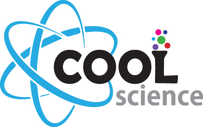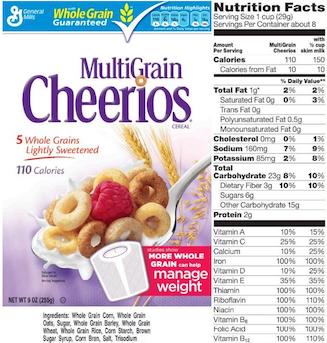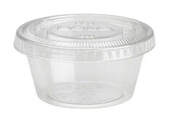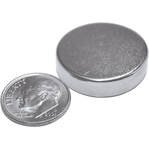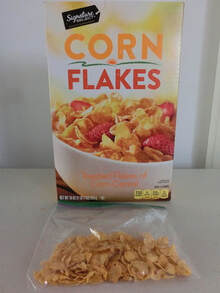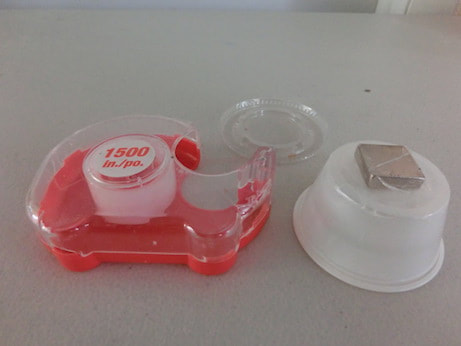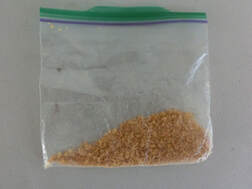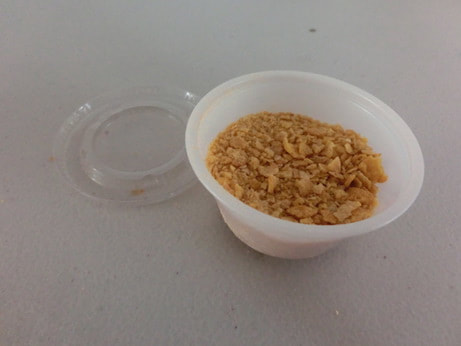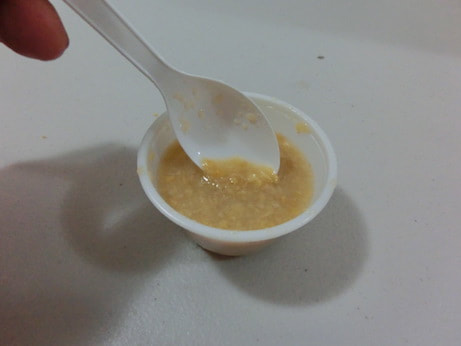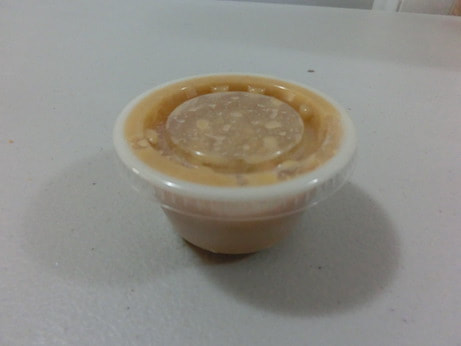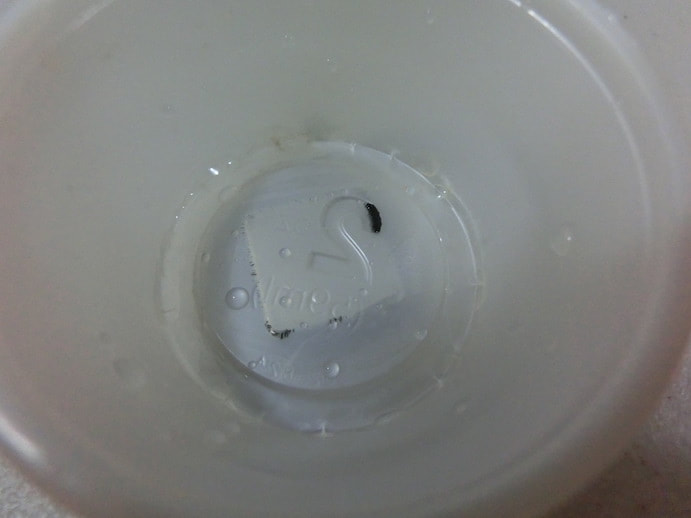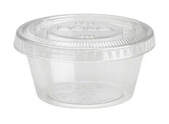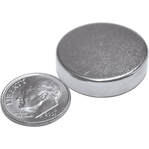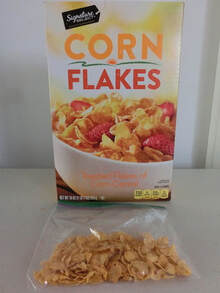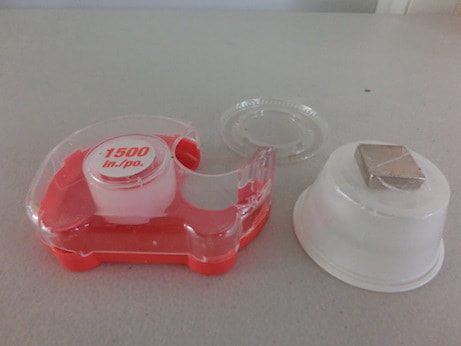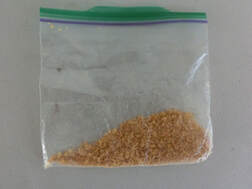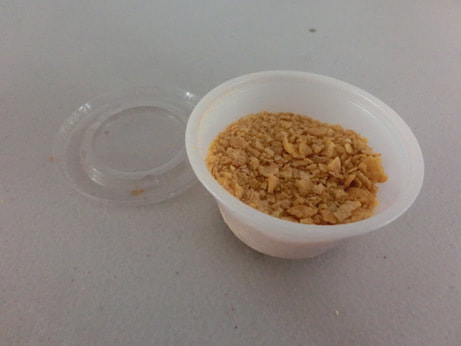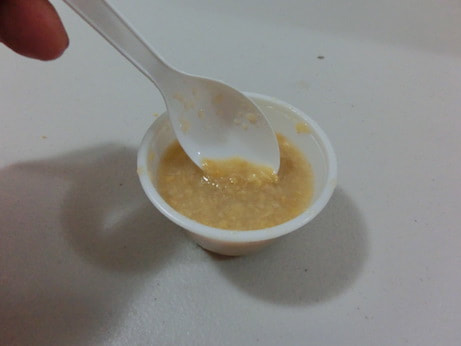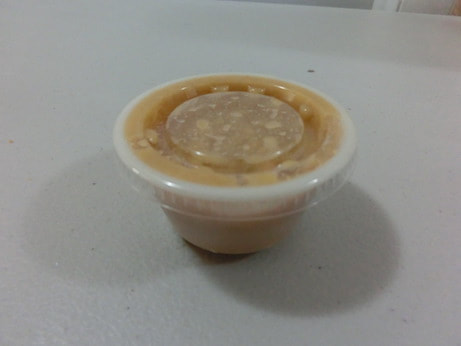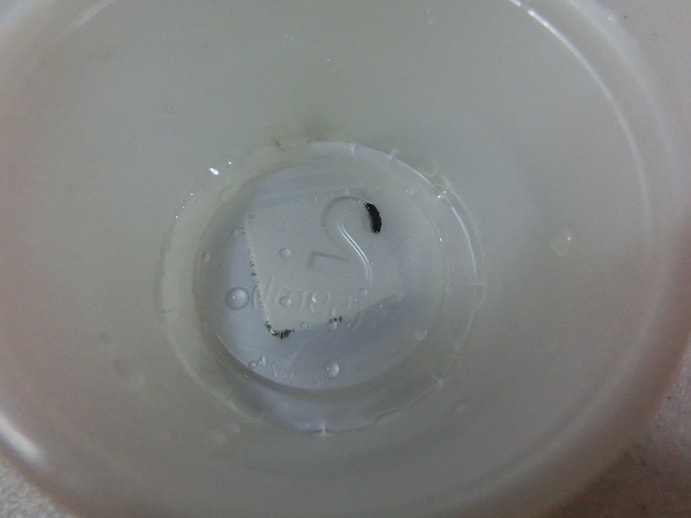Click and expand the tabs below to get started.
What you'll need
experimental procedure
what's happening
Iron is a crucial component of a balanced diet (there should actually be enough iron in your body to make one or two small nails), but some people might not consume enough iron naturally to sustain themselves. Because of this, many food manufacturers add iron to some foods to boost the average daily intake of this important mineral. Some foods may use a chemical form like ferric orthophosphate (FePO4) or ferrous sulfate (FeSO4), but most cereals simply use elemental (i.e. the pure atom) iron (Fe), also called "Reduced Iron".
The iron you see in your cereal is elemental iron- actual metallic iron filings or shavings similar to the little flakes you might see come off of a steel wool pad when you squeeze or rub it, just much smaller. That's right, you're eating metal in the morning! But not to worry, acids in your digestive tract can change this metallic iron into a form that is easily absorbed and used by your body. [Note: if you don't see any iron particles in this experiment you probably have a cereal that add one of the chemical forms listed above, so try a different cereal instead.] These very tiny metal particles are mixed into the rest of the cereal ingredients, which is why you don't normally see them, but a magnet will attract these small iron filings that are present in the cereal, separating them from the other cereal components which are not attracted to the magnet (there's more information about magnetism in the reference links below). Crushing the cereal and mixing it with water makes it much easier to separate the iron. By the way, this is also why you need to use a wooden popsicle stick or plastic spoon to stir in Step 8 of the procedure above (if your cup doesn't have a lid). Most metal spoons are made of steel, which contains a lot of iron and therefore will also be attracted to your magnet (although some types of steel are actually not very magnetic at all). Separating iron from cereal requires a powerful magnetic field, which is why we need to use a strong neodymium magnet, which is actually made from the elements neodymium, iron and boron (Nd2Fe14B). Neodymium is rarely found in nature, so these magnets are sometimes called Rare Earth magnets. Neodymium magnets are usually plated with a thin layer of another metal like nickel so they look like they're metal, but they are actually a type of ceramic. Ceramic materials are similar to glass, so these magnets are fragile and can shatter or break quite easily, often producing sharp edges, if you allow them to slam together. Because of this as well as their strength they must be handled very carefully. Some breakfast cereals contain much more iron that other cereals. You can find out how much iron any cereal contains by reading the "Nutrition Facts" labels on the side of the box (like the photo above). For example, "Total" cereal contains 100% of the recommended daily iron allowance, while "Shredded Wheat" contains only 8% - this is why you should see more iron filings from the Total cereal. Test several different cereals, does the amount of iron you see agree with the information on the labels? Is it important that you use the same amount of each cereal and shake it for the same length of time? Is it important to use the same amount of water? Why or why not?
variations and related activities
After you have separated the iron from the cereal and water mix and rinsed the cup with water, carefully remove the magnet from the bottom of the cup. Be sure not to tip the cup as once the magnet is removed the iron particles will be free to move. Add a little bit of water to the cup and gently stir or swirl the cup to mix the iron particles. Now hold the magnet near the sides or bottom of the cup and observe how the tiny iron particles move. Try holding the magnet in different positions. How does this affect the movement and orientation of the iron particles? If you're careful you may be able to observe the shape of the magnetic field lines that surround the magnet. You can also try this with a little bit of vegetable or baby oil instead of water in the cup [first tape the magnet to the bottom of the cup again to attract and pin all the iron, then carefully dump out the water and gently dry the cup without disturbing the iron particles, then add the oil]. How does the oil affect the motion of the iron particles?
If you hold your magnet near a flake of piece of the cereal, does it move? What if you crush the cereal into smaller pieces? Try floating a piece of cereal in a bowl of water, then holding the magnet very close. Does it move now? Another way to do this experiment is to place your magnet inside a small balloon, squeeze out any air inside, then tie it. Now simply drop the balloon into your bowl of mashed cereal and water mixture, attach the lid and shake several minutes as before. Open the lid, remove the balloon and rinse it with water to see the iron filings stuck to the balloon. If you want to try another cool science experiment with your left over cereal (although it has nothing to do with iron or metal), check out the "Cheerios Effect" (see reference link below). As the name suggests, it works best with Cheerios, but try it with other cereals too.
References and links to more information
Other variations of this experiment:
Why iron is so important for your body:
Which breakfast cereals have the most iron:
Iron and magnetism (ferromagnetism):
Magnetic field lines: The Cheerios Effect (and how it affects bugs that walk on water):
¡Hay metal en mi cereal! (en español)
Los metales como el hierro y el acero se utilizan para fabricar automóviles, barcos y clavos. Es posible que también haya escuchado que necesita alimentos ricos en hierro en su dieta para una buena salud; la deficiencia de hierro puede provocar enfermedades como la anemia. Pero tal vez nunca se dio cuenta de que en realidad es el mismo hierro en cada caso. Así es, estás comiendo exactamente lo mismo que se encuentra en las uñas todos los días, ¡y en este experimento lo verás por ti mismo!
Lo que necesitarás
Procedimiento experimental
QUÉ ESTA PASANDO
El hierro es un componente crucial de una dieta equilibrada (en realidad, debería haber suficiente hierro en su cuerpo para hacer una o dos uñas pequeñas), pero es posible que algunas personas no consuman suficiente hierro de forma natural para mantenerse. Debido a esto, muchos fabricantes de alimentos agregan hierro a algunos alimentos para aumentar la ingesta diaria promedio de este importante mineral. Algunos alimentos pueden usar una forma química como el ortofosfato férrico (FePO4) o el sulfato ferroso (FeSO4), pero la mayoría de los cereales simplemente usan hierro (Fe) elemental (es decir, el átomo puro), también llamado "Hierro reducido".
El hierro que ve en su cereal es hierro elemental, limaduras o virutas de hierro metálico reales similares a las pequeñas escamas que puede ver salir de una almohadilla de lana de acero cuando la aprieta o frota, pero mucho más pequeñas. Así es, ¡estás comiendo metal por la mañana! Pero no se preocupe, los ácidos en su tracto digestivo pueden cambiar este hierro metálico a una forma que su cuerpo absorbe y utiliza fácilmente. [Nota: si no ve ninguna partícula de hierro en este experimento, probablemente tenga un cereal que agregue una de las formas químicas mencionadas anteriormente, así que pruebe con un cereal diferente en su lugar.] Estas diminutas partículas de metal se mezclan con el resto del ingredientes de los cereales, por lo que normalmente no los ve, pero un imán atraerá estas pequeñas limaduras de hierro que están presentes en el cereal, separándolos de los otros componentes del cereal que no son atraídos por el imán (hay más información sobre el magnetismo en los enlaces de referencia a continuación). Triturar el cereal y mezclarlo con agua hace que sea mucho más fácil separar el hierro. Por cierto, esta es también la razón por la que debe usar un palito de paleta de madera o una cuchara de plástico para revolver en el Paso 8 del procedimiento anterior (si su taza no tiene tapa). La mayoría de las cucharas de metal están hechas de acero, que contiene mucho hierro y, por lo tanto, también se sentirán atraídas por su imán (aunque algunos tipos de acero en realidad no son muy magnéticos). La separación del hierro del cereal requiere un campo magnético potente, por lo que necesitamos utilizar un imán de neodimio potente, que en realidad está hecho de los elementos neodimio, hierro y boro (Nd2Fe14B). El neodimio rara vez se encuentra en la naturaleza, por lo que estos imanes a veces se denominan imanes de tierras raras. Los imanes de neodimio generalmente se recubren con una capa delgada de otro metal como el níquel para que parezcan de metal, pero en realidad son un tipo de cerámica. Los materiales cerámicos son similares al vidrio, por lo que estos imanes son frágiles y pueden romperse o romperse con bastante facilidad, a menudo produciendo bordes afilados, si permite que se golpeen entre sí. Debido a esto, así como a su fuerza, deben manejarse con mucho cuidado. Algunos cereales para el desayuno contienen mucho más hierro que otros cereales. Puede averiguar cuánto hierro contiene cualquier cereal leyendo las etiquetas de "Información nutricional" al costado de la caja (como la foto de arriba). Por ejemplo, el cereal "Total" contiene el 100% de la cantidad diaria recomendada de hierro, mientras que el "Trigo desmenuzado" contiene solo el 8%; es por eso que debería ver más limaduras de hierro del cereal Total. Pruebe varios cereales diferentes, ¿la cantidad de hierro que ve coincide con la información de las etiquetas? ¿Es importante que use la misma cantidad de cada cereal y lo agite durante el mismo tiempo? ¿Es importante utilizar la misma cantidad de agua? ¿Por qué o por qué no?
variaciones y actividades relacionada
Próximamente
REFERENCIAS Y ENLACES A MÁS INFORMACIÓN
Otras variaciones de este experimento:
Por qué el hierro es tan importante para tu cuerpo:
Qué cereales para el desayuno tienen más hierro:
Hierro y magnetismo (ferromagnetismo):
Líneas de campo magnético: El efecto Cheerios (y cómo afecta a los insectos que caminan sobre el agua):
Return to Main Menu
5 Comments
12/11/2020 03:42:12 am
It is a great blog post.I am always read your blog helpful and informative tips. I like it thanks for sharing this information with us
Reply
5/23/2021 08:26:30 am
Well done for the idea on this subject. Absolutely into the depth. Its really great blog. I recommended to the other people. You may like this one <a href="https://freaktofit.com/breakfast-cereals-healthy-or-not/">Breakfast Cereals: Healthy or not?</a>
Reply
Deb Devlin
8/11/2021 10:03:44 am
I just checked my box of cheerios, poured a small amount on a sheet of white printing paper, crushed them to a powder, put a magnet on them and it shows that metal is in the cheerios.
Reply
Cool Science
8/11/2021 08:28:18 pm
Hi Deb- Thanks for pointing this out. It will make an interesting variation. The iron particles we typically see are on the order of 0.5mm or so. That's pretty small, but much larger than a nano particle (i.e. nanometers or nm), which would be 100,000 times smaller! The best way to see the individual particles is to dump out the cereal and rinse the cup with the magnet still attached, then carefully remove the magnet (which will release the particles) and add a little water to the cup. The particles disperse throughout the water, but by holding your magnet near the cup (or taping the magnet to your tabletop and moving the cup near the magnet) you can watch the particles move around in the magnetic field. They look like a school of fish swimming in unison!
Reply
3/3/2023 03:59:42 am
Reply
Your comment will be posted after it is approved.
Leave a Reply. |
